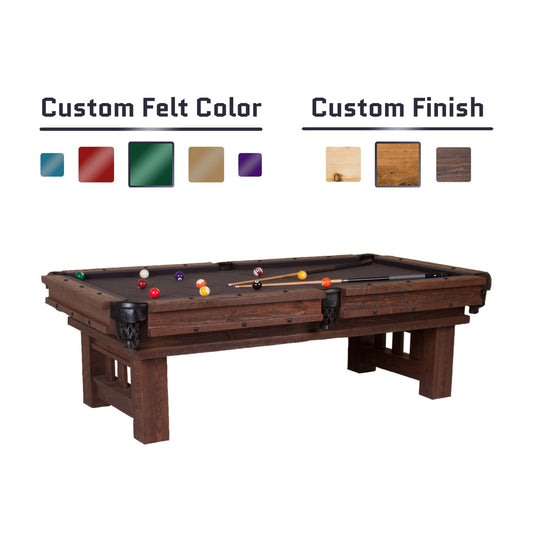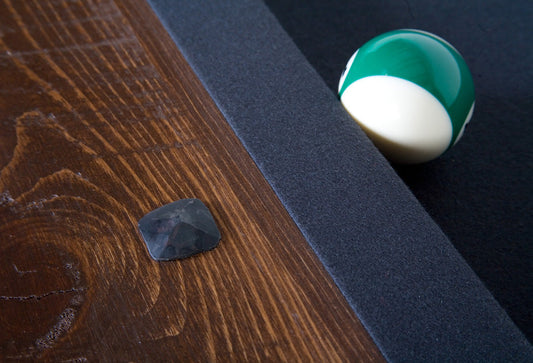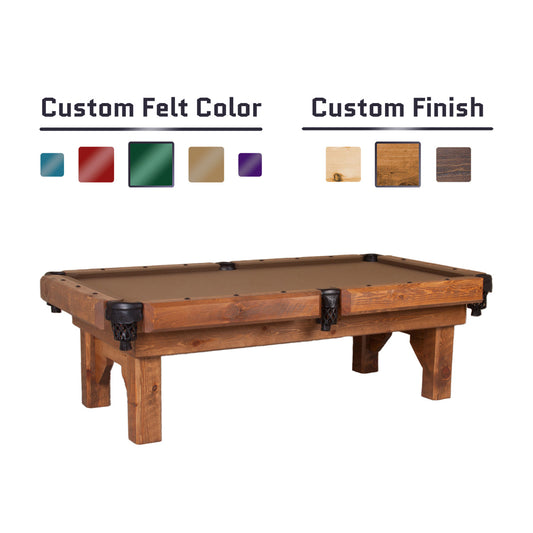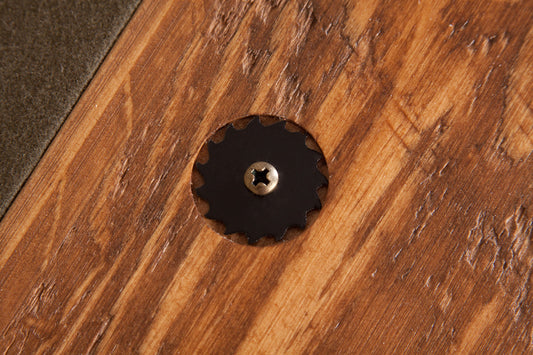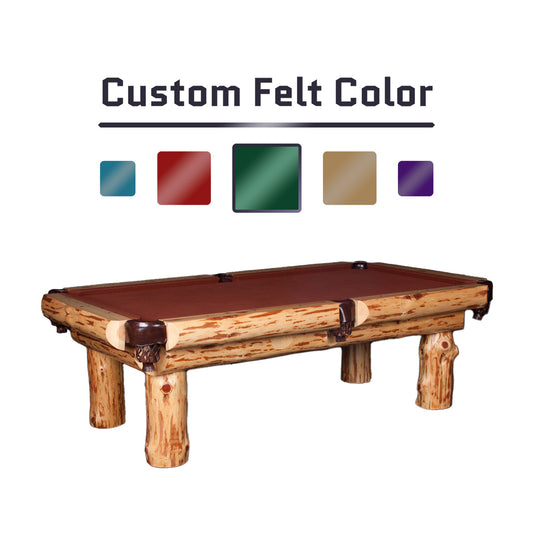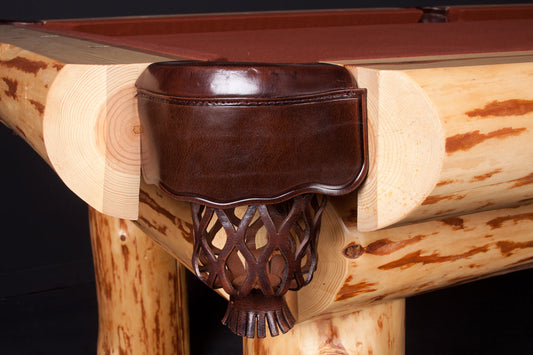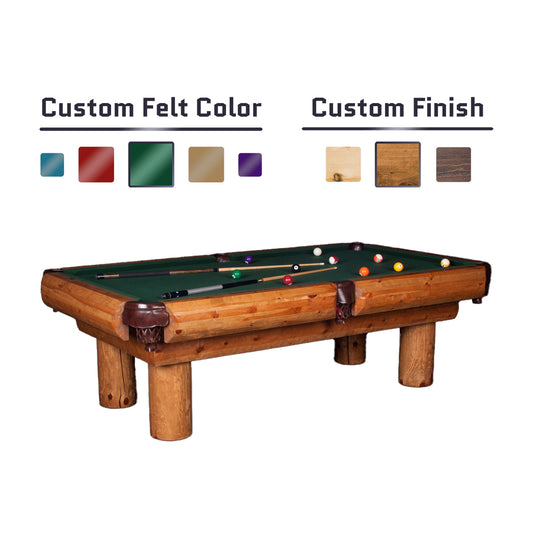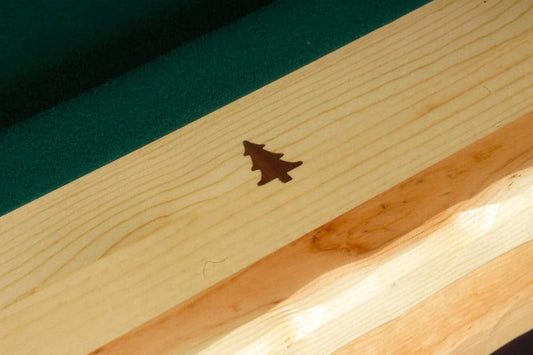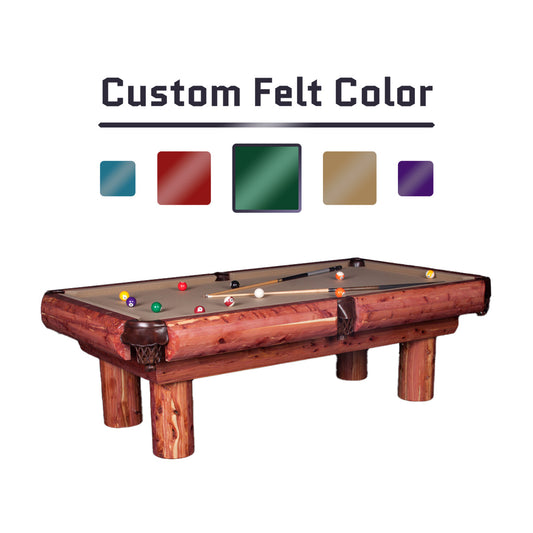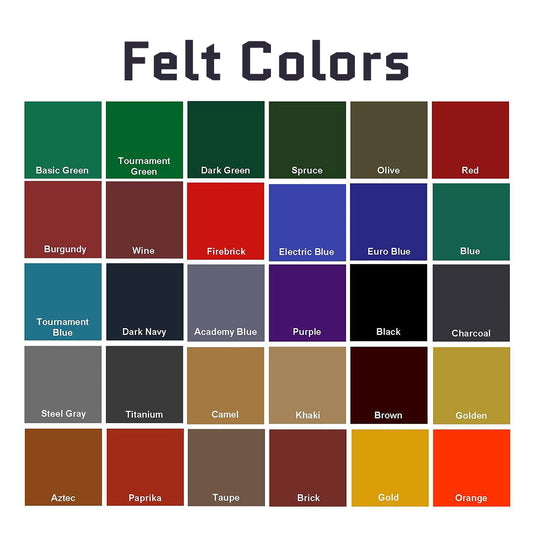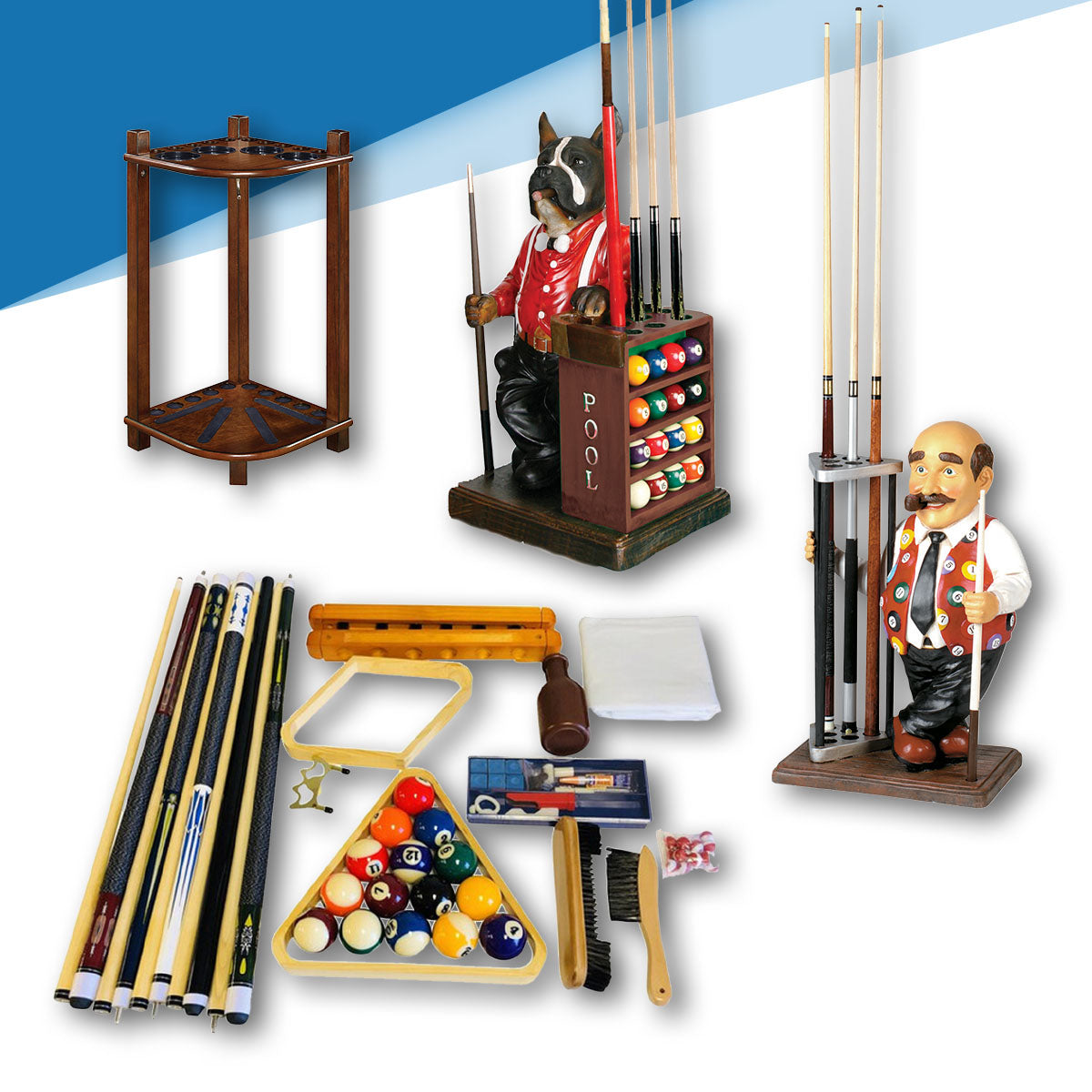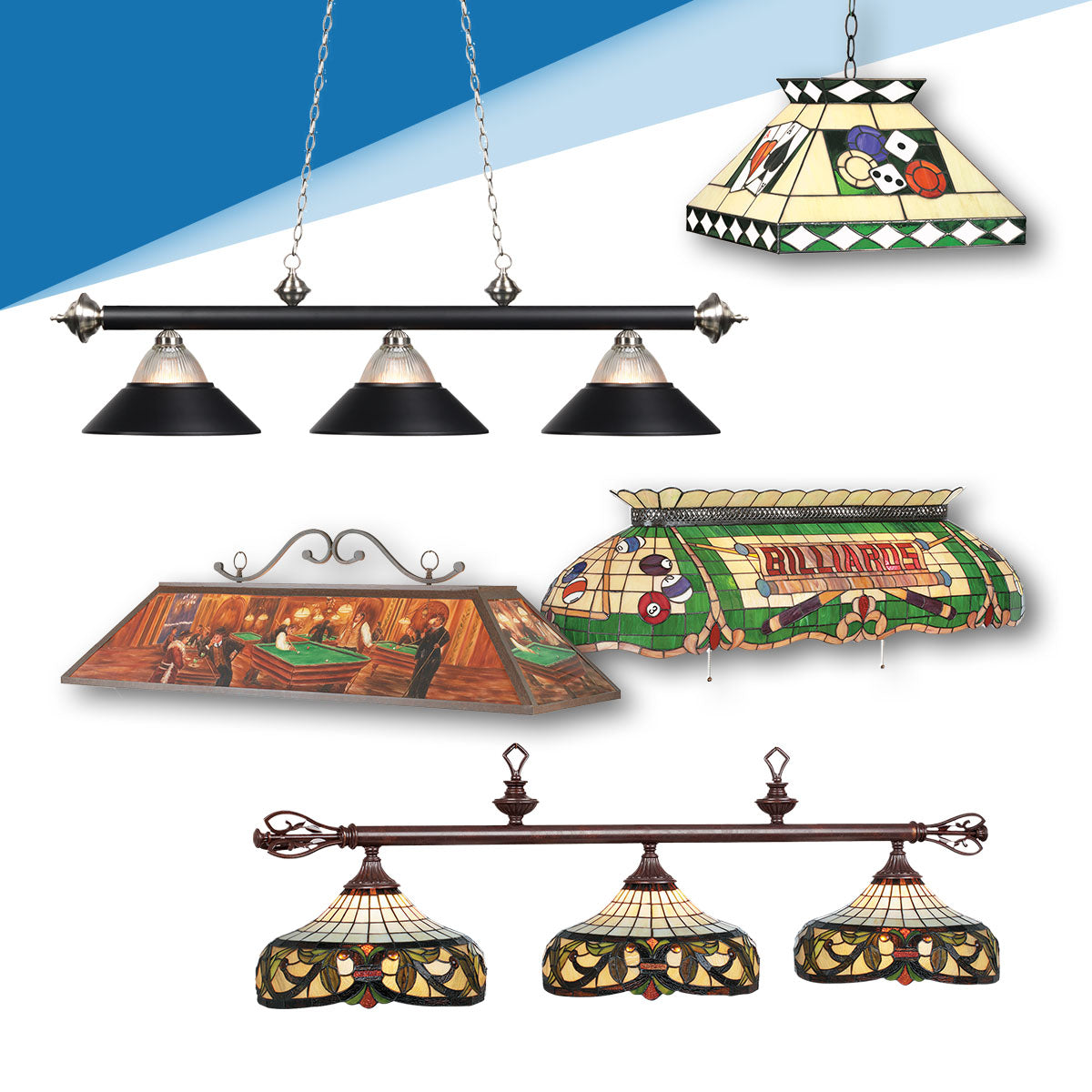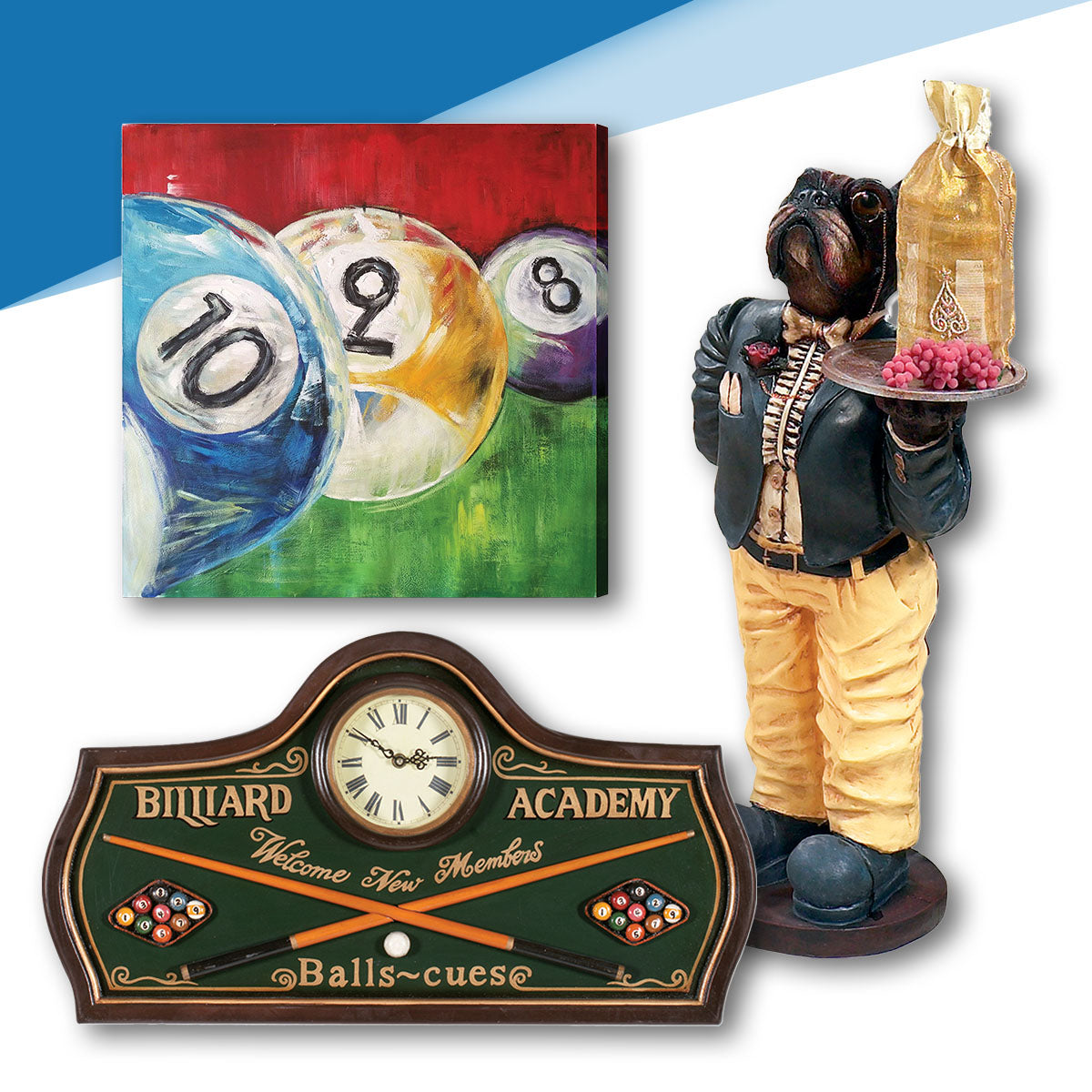Written by Daddy Cappuccino
7-minute read
Table of Contents
- Understanding Cue Tips
- How to Replace a Pool Cue Tip
- How to Replace a Pool Cue Tip Ferrule
- Conclusions
1. Understanding Cue Tips
Alright, folks, gather 'round the table because it's time to delve into the fascinating world of cue tips. You might be thinking, "It's just a tiny piece of leather, right?" Well, hold on to your pool cues because there's more to cue tips than meets the eye.
The Importance of Cue Tips
Picture this: you're lining up that crucial shot to win the game, and then... thud. Your cue ball goes nowhere, and you're left scratching your head. That, my friends, is where the magic of cue tips comes in.
Cue tips determine how your cue interacts with the cue ball. They affect everything from the spin you put on the ball to the accuracy of your shots. So, yeah, they're a pretty big deal.
What Do Cue Tips Cost?
Now, let's talk about the green stuff. Cue tips come in a range of prices, from a few bucks to a bit more. You can find leather tips for as low as $3 or opt for fancier layered tips in the $30 to $50 range.
Buying in bulk might save you a few bucks, but unless you're running your own pool hall, it's probably not necessary. And hey, most pool cue technicians have a nice selection of tips for you to choose from.
Types of Cue Tips
Not all cue tips are created equal. If you look at their hardness you can choose from:
- Soft Pool Cue Tips: These babies are all about precision and spin. They're like the gentle caress of a summer breeze on your shots. But watch out, they're not great for breaking and tend to wear out faster.
- Medium Pool Cue Tips: Now, these are your all-rounders. They strike a balance between power and accuracy, making them ideal for most players. Plus, they're more durable than the softies.
- Hard Pool Cue Tips: When you need brute force, hard tips are your best friends. Great for breaking and jumping shots, they can really send that cue ball flying. Just don't expect too much spin or forgiveness.
However when it comes to cue tips, it's not just about hardness; it's also about how they're made. There are two primary types to choose from:
- Solid Cue Tips: Imagine taking a single thick piece of specially tanned leather and punching out a single pressed layer from it – that's a solid cue tip. These tips have their merits; they're generally less expensive and deliver a distinct, solid hit when you strike the cue ball. Brands like LePro, Elkmaster, and Water Buffalo offer precise sizes that match ferrules, making installation easier. They're a great choice for replacing one-piece house cues.
However, solid cue tips have their drawbacks. Inconsistencies in the leather can result in differences in play between apparently identical tips from the same brand. They compress more and deform quicker, requiring more upkeep to maintain their shape. Overzealous sanding can lead to sponginess, so handle them with care.
- Laminated Cue Tips: These tips are made differently. They consist of multiple thin layers of compressed leather stacked on top of each other, glued, and pressed together. You might also hear them called laminated tips. Brands like Kamui, Moori, and Tiger are popular in this category.
Laminated tips tend to last longer, maintain their shape better, and require less maintenance. They offer greater consistency in play and can handle chalk better, giving you more control over the cue ball. This type of tip is favored by most professional players.

|
Laminated Cue Tips
|
Solid Cue Tips
|
Choosing the Right Cue Tip
So, which one's right for you? Well, that's where the fun begins. Choosing a cue tip is like finding the perfect tool for the job. It depends on your playing style and preferences.
If you've got a delicate touch and love adding spin to your shots, go soft. If you want an all-rounder, medium is the way to go. And if you're all about power and breaking, grab a hard tip.
Regarding construction, if you prefer a solid, economical hit and don't mind some extra maintenance, go for a solid cue tip. If you want a longer-lasting tip with consistent performance and less upkeep, opt for a laminated one.
Remember, there's no one-size-fits-all answer. It might take a bit of trial and error to find your cue tip soulmate.
Alright, we've scratched the surface (pun intended) of cue tips. Next up, we'll get hands-on and explore how to replace one of these bad boys.
2. How to Replace a Pool Cue Tip
Alright, dads and enthusiasts, I know replacing a pool cue tip might sound like a daunting task, but with the right guidance and tools (consider getting a pool cue replacement kit), you can master it. In this section, we'll walk you through the step-by-step process of replacing your cue tip, ensuring your cue is always in top shape for that perfect shot.

Step 1: Remove the Old Cue Tip
Say goodbye to that worn-out tip. To remove it, you'll need a trimmer. This tool allows you to get close to the ferrule while trimming the tip. However, a word of caution: the trimmer blade is sharp, so watch those fingers.
Carefully trim away the old cue tip. Take your time; there's no rush here. Remove excess glue and leather from the tip, but be gentle to avoid damaging the pool cue.
Step 2: Clean the Top of the Ferrule
Now that the old tip is history, it's time to clean up. Use a sander from your repair kit to clean the top of the ferrule. Keep it level, place the shaft against the guide, and remove any leftover glue.
A clean, flat ferrule is essential for ensuring the new tip sticks securely in place.
Step 3: Sand the Pool Cue Tip
Moving on, let's rough up that new pool cue tip. Grab some sandpaper and start roughing up the sides. It's a good idea to lay the sandpaper on a flat surface to ensure an even roughening.
Keep sanding until the tip feels suitably rough. You want the surface to be prepared to hold the adhesive firmly.
Apply adhesive to the ferrule to make it sticky.
Step 4: Attach the New Pool Cue Tip
It's time to introduce your cue to its brand-new tip. Thanks to the sanding in the previous step, the cue tip should adhere well to the ferrule. But before you attach it, ensure it's centered.
Press the tip firmly to remove any air pockets that might hinder proper adhesion. A paper towel can help you clean up any excess glue from the ferrule. Wiping it off is essential, as it will save you time sanding the pool cue tip post-installation.
Step 5: Install the Tip Clamp
Now, the waiting game begins. Assemble the tip clamp included in your pool cue replacement kit. This clamp should easily slip over the existing shaft.
Position the rubber band at the center of the cue tip and slide down the clamp. Secure it with glue and let it dry for approximately 15 minutes.
Step 6: Shape the Tip
Wondering how to shape a pool cue tip? Easy. With the new pool cue tip in place, grab your trusty sander to shape it. Carefully shave off the sides until it matches the ferrule's diameter. Keep your strokes straight and steady while sanding down.
Remember to take it slow and steady, sanding the tip until it matches the ferrule's diameter precisely.
But wait, there's more! We've got a bonus section for you, just in case your cue tip ferrule is showing signs deterioration!
3. How to Replace a Pool Cue Tip Ferrule
Time to explore the less-traveled road of pool cue maintenance - replacing the ferrule. If your cue's ferrule is showing signs of wear and tear, or you just want to experiment with different materials, we'll walk you through it. Remember, steady hands and some careful work are the keys to success.
Step 1: Gather Your Materials
Before you begin, make sure you have all the necessary materials at hand:
- A lathe
- A pair of pliers
- A replacement ferrule
- Glue
Choosing the right ferrule replacement is crucial, so pay attention to the thickness of the tenon and whether it's threaded. If your cue's shaft has seen its fair share of sanding over the years, finding a perfect match can be challenging. In such cases, consulting an expert or using your best judgment is advisable.
Step 2: Remove the Old Ferrule
Bid farewell to that old ferrule by squeezing the split along the opposite side with your lathe or a pair of pliers. Be extremely cautious here; damaging the wooden tenon can lead to costly repairs. Avoid twisting too hard, as you risk removing the tenon entirely.
Step 3: Glue on the Replacement
With the old ferrule gone, it's time to glue on the new one. Start by turning it down with your lathe. If you don't have a lathe, no worries; there are direct replacements available that require only glue and a bit of elbow grease.
Take your time during this process and ensure the new ferrule meets your specific diameter requirements.
A word of caution here: all these steps should be taken with the utmost care. Rushing through can result in costly mistakes, so be patient and thorough.
4. Conclusions
Well, there you have it, fellow cue enthusiasts. We've taken you on a journey through the world of cue tips, from understanding their importance to mastering the art of replacement. And we couldn't forget the often-overlooked hero, the ferrule.
Remember, your cue tip is your connection to the game, and choosing the right one is crucial. Whether you're into the soft touch of a gentle player or the power-packed shots of a pro, there's a cue tip for you. Don't forget to consider the material, hardness, and even the shape to truly tailor your cue to your playing style.
The tip of the cue may be small, but it's where the magic happens in the game of pool. So, go ahead, hit the tables, and make every shot count!
🍻 Cheers to your billiards journey and see you in the next article!






